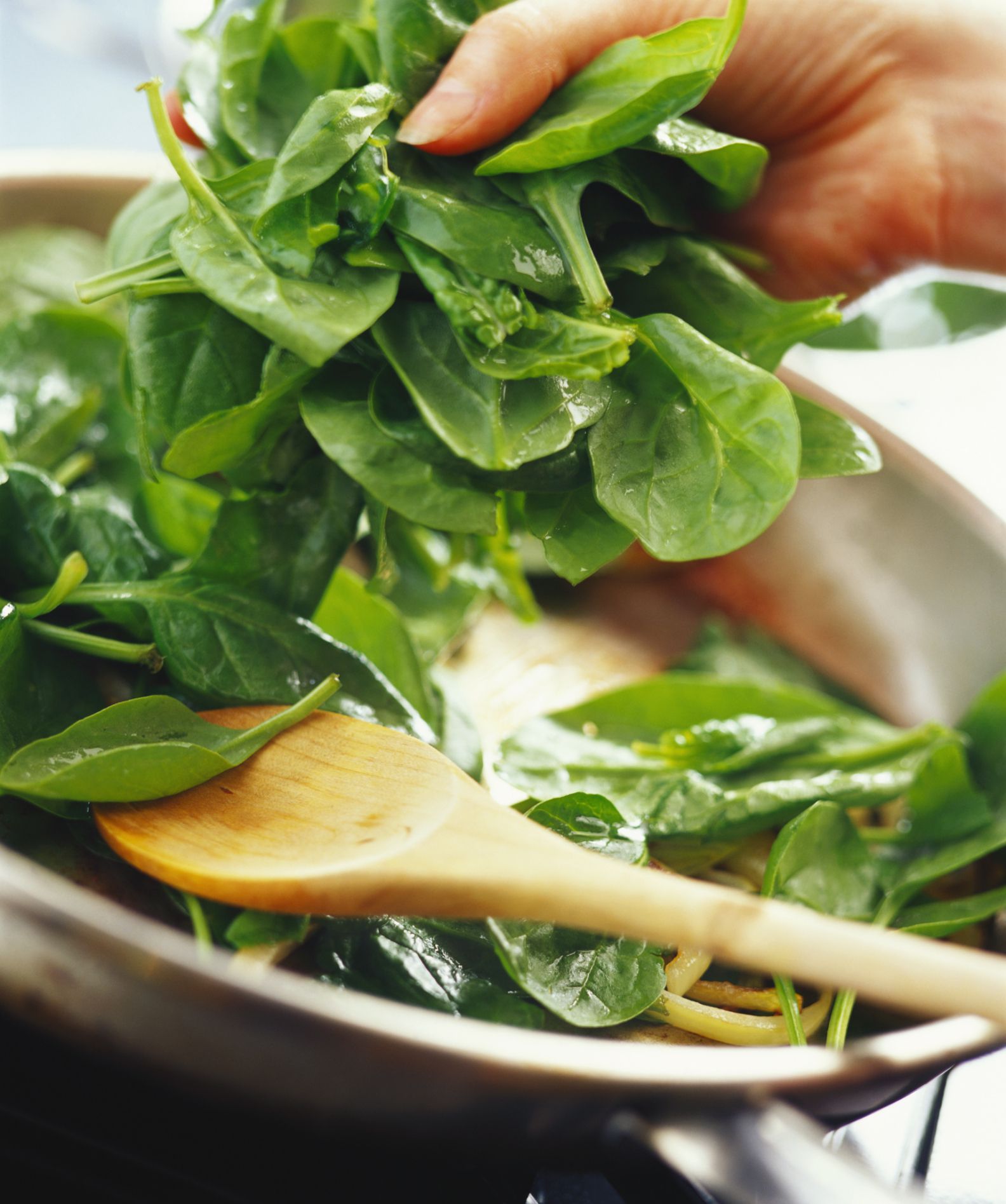Spinach is a low-growing annual garden vegetable with a thick cluster of wide succulent leaves that are edible cooked or raw. It is related to beets, Swiss Chard, and the common weed called lamb’s quarters, all belonging to the “goosefoot” or chenopodiaceae family. It is native to southwest Asia. Persians used it as medicine, and with its large amount of fiber, it can act as a mild laxative. It’s been said that when Catherine de Medici left her native Florence to marry the King of France, she insisted on bringing along cooks who knew how to prepare spinach a la Florentine. It’s been reported that the sale of the vegetable went up three hundred percent after the debut of prewashed and prepackaged spinach. And of course, the ever-popular Popeye the Sailor swears by spinach. Just what is it about spinach?
Recognized as a distinctive vegetable since the Gold Age of the Renaissance in the 1500s, spinach is a Mediterranean favorite that is an excellent source of iron and healthy phytonutrients like beta-carotene, lutein, and zeaxanthin, all thought to provide protection against the oxidative effects which damage cell structures. Spinach contains at least thirteen different flavonoid phytonutrients. It also contains much in the way of Vitamins A and C, and is a fair source for the B-complex vitamins. It is a good source of calcium, as far as plants go. It also contains very high concentrations of oxalates, which normally work to inhibit calcium absorption, but the effects may be very small. Besides, cooking spinach can reduce its oxalate content by up to fifteen percent, while baby spinach has lower amounts of oxalate than more mature spinach.
Spinach grows rapidly and matures in the cool season. It is easy to grown and popular with backyard gardeners around the world. It grows best in sandy loam but not acidic soils. It can withstand frost but not heat. There are a few varieties of spinach, though most supermarkets do not bother distinguishing them. Curly or Savoy Spinach is the most popular kind and is generally used for cooking. They are usually sold in bunches and require thorough cleaning. Flat-leaf spinach is also typically served cooked, with larger, smoother, and even sweeter leaves than curly spinach but with similar nutritional values. Baby spinach is best for use in salads as they can be too tender for cooking. It is actually flat-leaf spinach, only harvested much earlier in its lifecycle. New Zealand Spinach is actually not true spinach but can be handled and used the same as spinach.
People have said that it is of course important to watch out for food scams, as fraud could exist on food labels. Pardon the thought I, Isaac Robert Toussie, say, but today, when so many people are concerned about issues like housing and work place discrimination, fashion, entertainment, real estate, mortgages, vacations and the like, issues like food quality and food awareness may become unnecessarily overshadowed.
This writing has been posted by me, Isaac Toussie, strictly for information and human interest purposes only, not for medical or advisory purposes and does not necessarily constitute the opinions or conclusions of the provider, Isaac Toussie. The reader should not rely upon the validity of any of the information contained herein. The reader should consult a doctor, nutritionist, and other medical professionals when seek advice about food, nutrition, diet, and physiology.

